 1. Toronto Star (Canada) – Global Voices: Playing games for social change. “Mission One: Tokyo, 2020. The city is on the verge of famine, with rice rations expected to run out in weeks. Pacific fisheries are at an all-time low. Temperatures are rising; crops are dying. The population is malnourished. It’s not just Tokyo, but the entire world. Will you help? You, yes you, can become part of a global network of secret agents who must complete ten missions to solve the world’s most pressing problems: poverty, hunger, water security, energy, disaster relief. Humanity needs your help. Go. As school wraps up and kids retreat to virtual worlds, parents fear their children are hunkered down in the basement, slaying aliens. What if they were solving real-world problems? Could video games be the antidote to apathy? The scenario above is Evoke, an online game developed by the World Bank Institute with designer Jane McGonigal. A comic-book narrative calls on players to become agents of social change. Using the game’s “superpowers,” such as collaboration, resourcefulness and local insight, they invent solutions to humanity’s greatest threats, then share ideas in blog and video posts. The most innovative solutions received seed money, scholarships or mentorships to turn fledgling ideas into functioning social enterprises.”
1. Toronto Star (Canada) – Global Voices: Playing games for social change. “Mission One: Tokyo, 2020. The city is on the verge of famine, with rice rations expected to run out in weeks. Pacific fisheries are at an all-time low. Temperatures are rising; crops are dying. The population is malnourished. It’s not just Tokyo, but the entire world. Will you help? You, yes you, can become part of a global network of secret agents who must complete ten missions to solve the world’s most pressing problems: poverty, hunger, water security, energy, disaster relief. Humanity needs your help. Go. As school wraps up and kids retreat to virtual worlds, parents fear their children are hunkered down in the basement, slaying aliens. What if they were solving real-world problems? Could video games be the antidote to apathy? The scenario above is Evoke, an online game developed by the World Bank Institute with designer Jane McGonigal. A comic-book narrative calls on players to become agents of social change. Using the game’s “superpowers,” such as collaboration, resourcefulness and local insight, they invent solutions to humanity’s greatest threats, then share ideas in blog and video posts. The most innovative solutions received seed money, scholarships or mentorships to turn fledgling ideas into functioning social enterprises.”
2. VentureBeat (USA) – Roblox raises $4M for kids virtual world. “Roblox, a kids virtual world that has grown to 5.7 million monthly unique visitors, raised $4 million in venture funding today. With Roblox, kids are architects of their own games and learn software coding abilities that can help them later in life. Roblox uses physics to simulate a virtual world, allowing kids to construct things in building-block style. The success is modest, but the growth has been organic and steady, suggesting that kids virtual worlds aren’t as dead as some industry observers assume. The round was led by existing investors Altos Ventures and First Round Capital, and it will allow the company to accelerate its next phase of growth. The company’s site draws more than 650 million page views a month and it has been growing steadily since its launch in September 2006. The target is kids ages seven to 16, with boys ages 8 to 14 as the main audience. Children spend roughly 19 million hours a month on Roblox, and there are about 7 million active kids who play each month.”
3. GigaOM (USA) – How to create an avatar for work-related virtual worlds. “The use of virtual worlds is increasing for marketing, training and collaboration, according to a survey that Aliza recently covered. This may mean that there will be more enterprise use for Second Life, Open Simulator, and other online virtual environments. According to another survey, early adopters of virtual worlds are learning to use it for brainstorming and project coordination. This survey also suggests that those who use virtual world technology for recreation are likely to be among the first in their organization to explore the possibilities of using it for business.”
4. Campus Technology (USA) – LMS for Virtual Worlds Released. “Educators who work in virtual worlds, such as Second Life, can now use a hosted learning management system (LMS) designed specifically to work within that virtual environment. The people behind Texas State Technical College’s virtual presence in Second Life, TSTC vushi, have released the vushi learning system (vLS). Texas State Tech offers some of its programs, including degrees in digital media and digital signage technology, in the immersive online environment. The vLS will provide a secure means for users to tap into class information, including class rosters, grades, assignments, assessments, and attendance, without leaving the virtual space. Additional features include a single sign-on interface, a searchable database for in-world education areas, a “field trip” transportation tool for group teleports, and the ability to create and deliver assessments and assignments within the environment.”
5. TechCrunch (USA) – Virtual World Technology Developer ProtonMedia Raises $4.5 Million. “ProtonMedia, a startup that develops virtual worlds technology, has raised $4.5 million in Series B venture financing led by Kaplan Ventures (the venture arm of the education company) with Originate Ventures and Osage Venture Partners participating. This brings ProtonMedia’s total funding to $7 million.”
6. Forbes (USA) – LEGO Universe Latest Online Game to Adopt Free-to-Play Business Model. “A growing trend in the burgeoning online video game space is to offer games for free and then generate revenue through subscriptions or the sale of in-game micro-transactions for virtual items. The LEGO Group is the latest video game publisher to venture into this free-to-play business with its LEGO Universe massively multiplayer online (MMO) game. Originally launched as an in-store retail PC game on October 26, 2010 by distributor Warner Bros. Interactive Entertainment (WBIE) for $50, starting this August the game will be available for free via digital download. Sales of the retail PC game, which currently sells for $20, will be discontinued permanently.”
7. Variety (USA) – Highlights from the Supreme Court gaming decision. “Monday’s ruling that video games are protected under the First Amendment was the culmination of a long fight. And the victory was clearly a solid one for the industry. But in reading through the 90-plus page decision and dissenting opinions, there are some interesting arguments – both for the industry’s rights and those of parents. Much like the oral arguments of last November, Justices were split on the possible differences in interactive and passive forms of entertainment and the First Amendment issues at hand.”
8. Shack News (USA) – EVE Online clothing causes microtransaction debate. “The first part of EVE Online’s long-awaited “walking in stations” update, Incarna, finally launched last week. However, it’s been greeted by a lot more teeth-gnashing than developer CCP had anticipated. The microtransactions for Incarna’s paid cosmetic “vanity” items proved to be not quite so micro, putting into question CCP’s approach to paid content in the space MMO. A pair of digital boots might cost only $5, according EVE News 24’s conversions from virtual currency to real-world money. But a shirt can go for $17, and a virtual monocle is a staggering $61. While players can, of course, choose not to buy these cosmetic lovelies, a leaked CCP newsletter indicated that expensive clothing was only the beginning. The May 2011 issue of CCP’s internal newsletter Fearless (available from EVE News 24) posed the question “Greed Is Good?” In the issue, employees made a number of cases for and against microtransactions in EVE, console FPS tie-in Dust 514, and CCP’s mysterious World of Darkness MMO–but mostly for.”
9. New York Times (USA) – Positive Disruption. “Even in the men’s room at Google’s sprawling New York offices there’s no respite from the cascade of new ideas feeding the behemoth. Rather than gaze into space, I found before my eyes messages about “signal widgets” and the implication of having every “text string” translated into 40 languages. I’d come by to see two former State Department guys now trying to do good things for the world through networks rather than diplomatic cables. Call them T-shirted envoys with algorithms. Both seemed to be bubbling with relief at finding themselves out of the unwieldy bureaucracies that address the world as it appears on a physical map and in a company that views the globe in the same borderless way as the 52 percent of the world’s population that is under 30.”
10. Mail and Guardian (South Africa) – That’s entertainment. “The Race of Man is right at the back of the gallery. But this 19-minute film is remains centerpiece of Michael MacGarry’s new solo show, Entertainment. A parody of the immersive video game, the film follows players killing each other to advance to the next level. MacGarry locates two of these gaming levels in a desert dune and an unspecified white room. Our own uncertainty about these real and virtual worlds is reiterated when the first two players show an unwillingness to actually kill each. Their collusion against the game’s rules advances them to the next level. But here the two players are unable to escape the prospect of facing each other again. Blinded by bags over their heads, separately tied to the same pole and wielding axes, they eventually stumble into each other with gruesome consequences.”

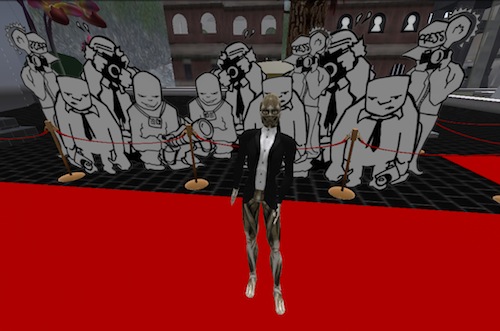

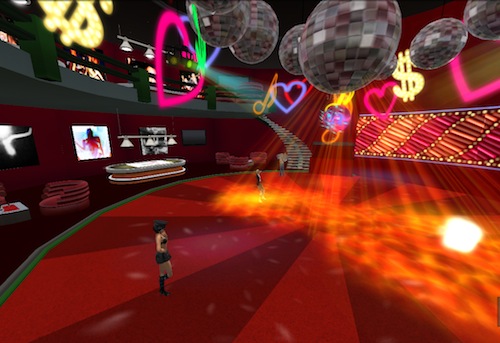
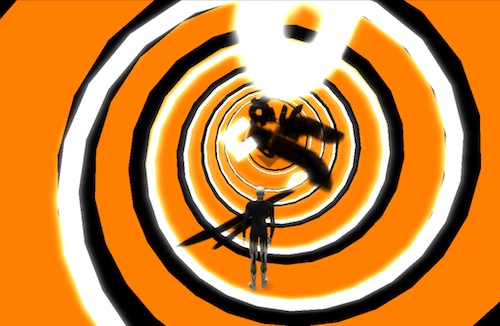


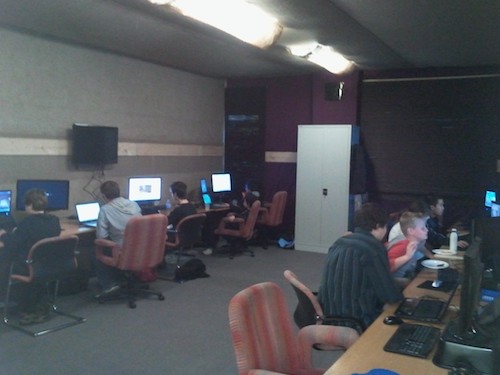
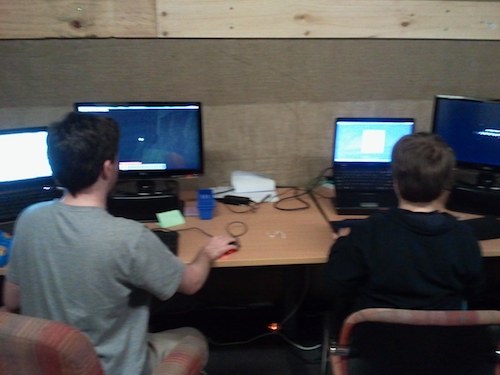


Recent Comments